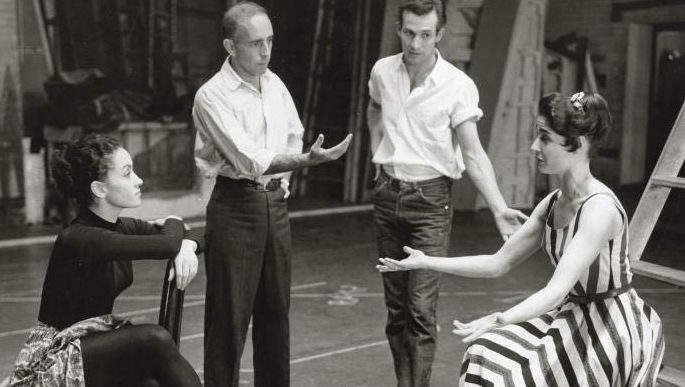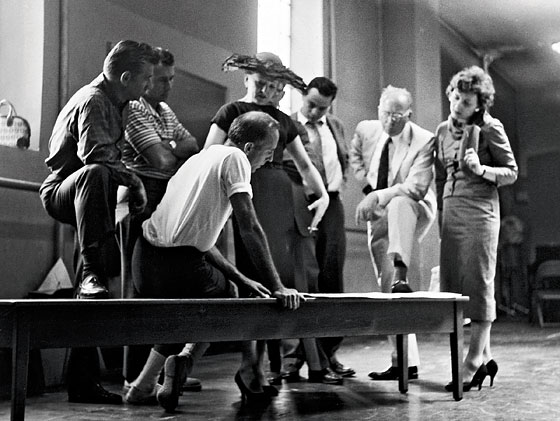
An Editorial Feature from Google Arts and Culture
1. It was originally going to be an ‘East Side Story’
Jerome Robbins’ original premise for the show was an ill-fated romance between a Catholic boy and a Jewish girl on the Upper East Side. However, the project, a collaboration between Leonard Bernstein, Arthur Laurents and Robbins, was put on the back-burner while the trio worked on other projects. Later, in the mid-1950s, Laurents and Bernstein met at a hotel in LA. Looking through the news headlines of the day, one jumped out at them: the rise of teen gangs. So ‘East Side Story’ moved across town to become West Side Story—a story focused on clashes between gangs of white Americans and newly immigrated Puerto Ricans
2. Lin Manuel Miranda translated it into Spanish
Prior to nabbing almost every award going—Tony’s, Emmy’s and Grammy’s included—for his massive Broadway hit Hamilton, Lin-Manuel Miranda worked on the Spanish translation of West Side Story for the 2009 revival. His translations were used for some sections of the Puerto Rican gang scenes, going some of the way to redressing some of the less culturally sensitive and more stereotypical aspects of the original productions.
3. Audrey Hepburn turned down the role of Maria in the film version
Audrey Hepburn, star of Funny Face and Breakfast at Tiffany’s, was originally asked to play the lead character of Maria. However, Hepburn was pregnant, and after having previously suffered several miscarriages, she turned down the role for fear of overexerting herself. Coincidentally, Maria’s singing voice would also become the voice of Eliza Doolittle in My Fair Lady; singer Marni Nixon overdubbed both Natalie Wood and Audrey Hepburn in these iconic films.
4. The creators had a history of confronting racism
West Side Story wasn’t the first time the creators tackled such biting, contemporary, political subject matter. On The Town, the 1944 show by Leonard Bernstein, the show’s composer, and Jerome Robbins, its choreographer and director, also broke some serious political ground. While Jim Crow raged on, their chorus featured black men holding hands with white women, and despite the rampant anti-Japanese sentiments of the WW2 era, they also cast a Japanese-American dancer in a major role.
5. The choreographer went undercover at a real New York high school
Show choreographer Jerome Robbins had some up-close and personal methods of research. Similarly to his earlier process with The King and I, Robbins went directly to the source for his dance and body movement inspiration, visiting a high school dance at a Puerto Rican neighborhood in Harlem. “They do dances that I’ve never seen before, evolving their own style and approach,” Robbins wrote to his friend, the dancer Tanaquil Le Clercq, in February 1957 while at work on West Side Story.
6. Jets and Sharks weren’t allowed to mix in real life
To amp up the onstage tension, choreographer Jerome Robbins forbid the actors playing Jets and Sharks from talking to each other or mixing off stage, and they even rehearsed in different rooms. This created a realism that spilled out in some surprising ways, with the Shark actors playing real-life practical jokes on the Jets.
7. However, there was a cross-gang love affair in real life too
Despite this antagonism, heated up by Robbins, there was a real-life inter-gang love affair on set. Chita Rivera, the well-loved Broadway star, a Shark, and dancer Tony Mordente, a Jet, ended up falling in love, getting married and having a baby together. A real-life romance that ended much less tragically than the onstage pairings.
8. It was meant to be the first ever broadway show to say the f-word
In tune with its edgy subject matter, Stephen Sondheim intended for West Side Story to be the first ever Broadway production to use the f-word. However, on realizing that this would limit the distribution of the show’s soundtrack, it was replaced with the slightly bizarre insult, “Krup you!”
9. The choreographer worked the cast so hard they burned through their clothes
Robbins famously pushed his dancers to extremes, making them rehearse for weeks longer than normal for a Broadway show. Similarly, when shooting the film, the actors in the ‘Cool’ scene were dancing so hard that they reportedly burned through their knee pads, and working through over 200 pairs of shoes by the end of filming.
10. Arthur Laurents made up some of his own language for the show
Arthur Laurents was worried that the youth gang street slang would quickly date, so he made up some language of his own, with characters saying phrases like “riga tiga tum tum”. As Sondheim recounts, he created “a sort of Alice in Wonderland language that doesn’t date.” It’s perhaps this eye to the long term that has helped West Side Story to still feel so relevant over half a century later.




